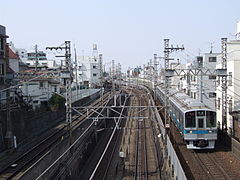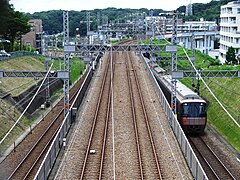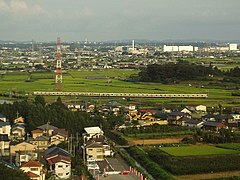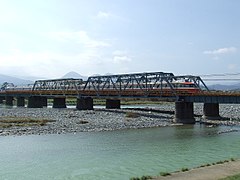Odakyū Odawara line
| Odakyū Odawara line | |||||||||||||||||||||||||||||||||||||||||||||||||||||||||||||||||||||||||||||||||||||||||||||||||||||||||||||||||||||||||||||||||||||||||||||||||||||||||||||||||||||||||||||||||||||||||||||||||||||||||||||||||||||||||||||||||||||||||||||||||||||||||||||||||||||||||||||||||||||||||||||||||||||||||||||||||||||||||||||||||||||||||||||||||||||||||||||||||||||||||||||||||||||||||||||||||||||||||||||||||||||||||||||||||||||||||||||||||||||||||||||||||||||||||||||||||||||||||||||||||||||||||||||||||||||||||||||||||||||||||
|---|---|---|---|---|---|---|---|---|---|---|---|---|---|---|---|---|---|---|---|---|---|---|---|---|---|---|---|---|---|---|---|---|---|---|---|---|---|---|---|---|---|---|---|---|---|---|---|---|---|---|---|---|---|---|---|---|---|---|---|---|---|---|---|---|---|---|---|---|---|---|---|---|---|---|---|---|---|---|---|---|---|---|---|---|---|---|---|---|---|---|---|---|---|---|---|---|---|---|---|---|---|---|---|---|---|---|---|---|---|---|---|---|---|---|---|---|---|---|---|---|---|---|---|---|---|---|---|---|---|---|---|---|---|---|---|---|---|---|---|---|---|---|---|---|---|---|---|---|---|---|---|---|---|---|---|---|---|---|---|---|---|---|---|---|---|---|---|---|---|---|---|---|---|---|---|---|---|---|---|---|---|---|---|---|---|---|---|---|---|---|---|---|---|---|---|---|---|---|---|---|---|---|---|---|---|---|---|---|---|---|---|---|---|---|---|---|---|---|---|---|---|---|---|---|---|---|---|---|---|---|---|---|---|---|---|---|---|---|---|---|---|---|---|---|---|---|---|---|---|---|---|---|---|---|---|---|---|---|---|---|---|---|---|---|---|---|---|---|---|---|---|---|---|---|---|---|---|---|---|---|---|---|---|---|---|---|---|---|---|---|---|---|---|---|---|---|---|---|---|---|---|---|---|---|---|---|---|---|---|---|---|---|---|---|---|---|---|---|---|---|---|---|---|---|---|---|---|---|---|---|---|---|---|---|---|---|---|---|---|---|---|---|---|---|---|---|---|---|---|---|---|---|---|---|---|---|---|---|---|---|---|---|---|---|---|---|---|---|---|---|---|---|---|---|---|---|---|---|---|---|---|---|---|---|---|---|---|---|---|---|---|---|---|---|---|---|---|---|---|---|---|---|---|---|---|---|---|---|---|---|---|---|---|---|---|---|---|---|---|---|---|---|---|---|---|---|---|---|---|---|---|---|---|---|---|---|---|---|---|---|---|---|---|---|---|---|---|---|---|---|---|---|---|---|---|---|---|---|---|---|---|---|---|---|---|---|---|---|---|---|---|---|---|---|---|---|---|---|---|---|---|---|---|---|---|---|---|---|---|---|---|---|---|---|---|---|---|---|---|---|---|---|---|---|---|---|---|---|---|---|---|---|---|---|---|---|---|---|---|---|---|
|
Romancecar -Triebzug Series 50000 VSE
| |||||||||||||||||||||||||||||||||||||||||||||||||||||||||||||||||||||||||||||||||||||||||||||||||||||||||||||||||||||||||||||||||||||||||||||||||||||||||||||||||||||||||||||||||||||||||||||||||||||||||||||||||||||||||||||||||||||||||||||||||||||||||||||||||||||||||||||||||||||||||||||||||||||||||||||||||||||||||||||||||||||||||||||||||||||||||||||||||||||||||||||||||||||||||||||||||||||||||||||||||||||||||||||||||||||||||||||||||||||||||||||||||||||||||||||||||||||||||||||||||||||||||||||||||||||||||||||||||||||||||
| Route length: | 82.5 km | ||||||||||||||||||||||||||||||||||||||||||||||||||||||||||||||||||||||||||||||||||||||||||||||||||||||||||||||||||||||||||||||||||||||||||||||||||||||||||||||||||||||||||||||||||||||||||||||||||||||||||||||||||||||||||||||||||||||||||||||||||||||||||||||||||||||||||||||||||||||||||||||||||||||||||||||||||||||||||||||||||||||||||||||||||||||||||||||||||||||||||||||||||||||||||||||||||||||||||||||||||||||||||||||||||||||||||||||||||||||||||||||||||||||||||||||||||||||||||||||||||||||||||||||||||||||||||||||||||||||||
| Gauge : | 1067 mm ( cape track ) | ||||||||||||||||||||||||||||||||||||||||||||||||||||||||||||||||||||||||||||||||||||||||||||||||||||||||||||||||||||||||||||||||||||||||||||||||||||||||||||||||||||||||||||||||||||||||||||||||||||||||||||||||||||||||||||||||||||||||||||||||||||||||||||||||||||||||||||||||||||||||||||||||||||||||||||||||||||||||||||||||||||||||||||||||||||||||||||||||||||||||||||||||||||||||||||||||||||||||||||||||||||||||||||||||||||||||||||||||||||||||||||||||||||||||||||||||||||||||||||||||||||||||||||||||||||||||||||||||||||||||
| Power system : | 1500 V = | ||||||||||||||||||||||||||||||||||||||||||||||||||||||||||||||||||||||||||||||||||||||||||||||||||||||||||||||||||||||||||||||||||||||||||||||||||||||||||||||||||||||||||||||||||||||||||||||||||||||||||||||||||||||||||||||||||||||||||||||||||||||||||||||||||||||||||||||||||||||||||||||||||||||||||||||||||||||||||||||||||||||||||||||||||||||||||||||||||||||||||||||||||||||||||||||||||||||||||||||||||||||||||||||||||||||||||||||||||||||||||||||||||||||||||||||||||||||||||||||||||||||||||||||||||||||||||||||||||||||||
| Top speed: | 110 km / h | ||||||||||||||||||||||||||||||||||||||||||||||||||||||||||||||||||||||||||||||||||||||||||||||||||||||||||||||||||||||||||||||||||||||||||||||||||||||||||||||||||||||||||||||||||||||||||||||||||||||||||||||||||||||||||||||||||||||||||||||||||||||||||||||||||||||||||||||||||||||||||||||||||||||||||||||||||||||||||||||||||||||||||||||||||||||||||||||||||||||||||||||||||||||||||||||||||||||||||||||||||||||||||||||||||||||||||||||||||||||||||||||||||||||||||||||||||||||||||||||||||||||||||||||||||||||||||||||||||||||||
| Dual track : | whole route | ||||||||||||||||||||||||||||||||||||||||||||||||||||||||||||||||||||||||||||||||||||||||||||||||||||||||||||||||||||||||||||||||||||||||||||||||||||||||||||||||||||||||||||||||||||||||||||||||||||||||||||||||||||||||||||||||||||||||||||||||||||||||||||||||||||||||||||||||||||||||||||||||||||||||||||||||||||||||||||||||||||||||||||||||||||||||||||||||||||||||||||||||||||||||||||||||||||||||||||||||||||||||||||||||||||||||||||||||||||||||||||||||||||||||||||||||||||||||||||||||||||||||||||||||||||||||||||||||||||||||
| Society: | Odakyū Dentetsu | ||||||||||||||||||||||||||||||||||||||||||||||||||||||||||||||||||||||||||||||||||||||||||||||||||||||||||||||||||||||||||||||||||||||||||||||||||||||||||||||||||||||||||||||||||||||||||||||||||||||||||||||||||||||||||||||||||||||||||||||||||||||||||||||||||||||||||||||||||||||||||||||||||||||||||||||||||||||||||||||||||||||||||||||||||||||||||||||||||||||||||||||||||||||||||||||||||||||||||||||||||||||||||||||||||||||||||||||||||||||||||||||||||||||||||||||||||||||||||||||||||||||||||||||||||||||||||||||||||||||||
|
|||||||||||||||||||||||||||||||||||||||||||||||||||||||||||||||||||||||||||||||||||||||||||||||||||||||||||||||||||||||||||||||||||||||||||||||||||||||||||||||||||||||||||||||||||||||||||||||||||||||||||||||||||||||||||||||||||||||||||||||||||||||||||||||||||||||||||||||||||||||||||||||||||||||||||||||||||||||||||||||||||||||||||||||||||||||||||||||||||||||||||||||||||||||||||||||||||||||||||||||||||||||||||||||||||||||||||||||||||||||||||||||||||||||||||||||||||||||||||||||||||||||||||||||||||||||||||||||||||||||||
The Odakyū Odawara Line ( Japanese 小田急 小田原 線 , Odakyū Odawara-sen ) is a railway line on the Japanese island of Honshū , which is operated by the Odakyū Dentetsu railway company . It runs through the prefectures of Tokyo and Kanagawa . She connects the city center of Tokyo located Shinjuku Station, with the cities of Machida , Ebina , Atsugi and Odawara . It is the main route of the Odakyū Dentetsu and connected with two branches.
Route description
The 82.5 km long route is laid in Cape Gauge (1067 mm) and electrified with 1500 V DC . It serves 47 train stations and the maximum speed is 110 km / h. Between the train stations Yoyogi-Uehara and Noborito , the line has been expanded to four tracks over a length of 11.7 km. The 0.6 km long section between Noborito and Mukōgaoka-Yūen is provisionally equipped with three tracks, but can be expanded to four tracks . All other sections of the route are double-track. Freight traffic is not carried out, railway depots are located at Kitami, Sagami-Ōno and Ebina .
The northern starting point is Shinjuku station , where the Odakyū tracks on the west side of the extensive facility extend parallel to those of JR East . The terminus is divided into two parts, with three tracks on the ground floor and two tracks in the basement of the Odakyu Group's department store . The line is initially double-tracked and despite its urban character partly at ground level, with several level crossings at the same level . It runs in a south-westerly direction and passes the Meiji Shrine . Yoyogi-Hachiman Station is on a tight curve. Immediately thereafter, the Odawara line merges with the Chiyoda line of the Tokyo subway to form a four-track route (with Yoyogi-Uehara as the first common station). This is followed by an approximately one and a half kilometer long covered section on two levels with the tunnel stations Higashi-Kitazawa, Shimo-Kitazawa and Setagaya-Daita. In Shimo-Kitazawa it is crossed by the Keiō Inokashira lineage . This is followed by a wide viaduct, interrupted by the Seijōgakuen-mae tunnel station on the campus of Seijō University .
A 429.6 meter long girder bridge leads the viaduct in the Musashino plain across the Tama river . The steel construction, completed in 2008, replaced the original bridge from 1927. On the opposite bank, the line in Noborito station (crossing with the Nambu line ) narrows to three tracks. A little later, after Mukōgaoka-Yūen station, the viaduct ends and the Odawara line becomes a double-track, predominantly at ground level route again. Shortly after Shin-Yurigaoka , the Tama Line branches off. The Yokohama Line is crossed in Machida and the Enoshima Line branches off shortly after Sagami-Ōno . In Ebina there are transitions to the Sagami Line and Sōtetsu Main Line .
Between Atsugi and Atsugi , the route crosses the Sagami on a truss bridge, 410 meters long, built in 1972 . The rural part of the Odawara line begins in Isehara . After crossing the Hadano plain, a winding route follows through the narrow Yonjūhachi valley in the Tanzawa mountainous region . In Matsuda there is a short rail connection to the Gotemba line . On the bridge over the Sakawa the route reaches the Ashigara plain . It turns south, follows the right bank of the Sakawa and ends at Odawara station. There it goes over to the Hakone-Tozan Line .
Trains
The supply of trains on the Odawara Line is very dense. For example, more than 30 trains per hour run on the most heavily used section between Yoyogi-Uehara and Shin-Yurigaoka . The Romancecar express trains, which are mainly used for tourist traffic to the Hakone and Fuji volcanoes and to the Enoshima peninsula , are known throughout Japan . They form the train type Tokkyū ( 特急 , English Limited Express ). Reservations are required for all seats on this particularly comfortably equipped train. In addition to the basic fare, a surcharge of almost the same amount must be paid. The rolling stock differs markedly from that of the regular trains; As a special feature, the younger series have pulpit cars at the ends of the train. From Shinjuku , the romance car trains run every 15 to 20 minutes with a few stops in between, although the range is somewhat larger on weekends and public holidays. Your destinations are Hakone-Yumoto (connection to the Hakone-Tozan line ), Katase-Enoshima and Gotemba .
A number of express trains are not subject to a surcharge . These operate either to and from Shinjuku or in Yoyogi Uehara to and from Chiyoda-line of the Tokyo subway by bound . In doing so, they skip a different number of intermediate stations.
■ Kaisoku-kyūkō ( 快速 急 行 , English Rapid Express )
The fastest express trains on the Odawara Line initially run between Shinjuku and Sagami-Ōno . Half of them continue on the Odawara Line to Odawara , serving all train stations between Hon-Atsugi and Shin-Matsuda . The other half is routed to the Enoshima Line and goes to Fujisawa .
■ Tsūkin-kyūkō ( 通勤 急 行 , Commuter Express )
During the morning rush hour only in one direction from Karakida , the terminus of the Tama line , via Tama-Center and Shin-Yurigaoka to Shinjuku.
■ Kyūkō ( 急 行 , English Express )
During the day, alternating from Shinjuku to Karakida on the Tama Line or to Shin-Matsuda or Odawara. In the morning and in the evening, the Kyūkō run on the Chiyoda Line. They connect Toride or Abiko on the Jōban line with Hon-Atsugi or Isehara .
■ Junkyū ( 準 急 , English Semi Express )
Full day from Isehara or Mukōgaoka-Yūen to Yoyogi-Uehara; from there on on the Chiyoda line and on the Jōban line to Abiko or Toride.
■ Tsūkin-junkyū ( 通勤 準 急 , Commuter Semi Express )
During the morning rush hour only in one direction from Isehara via the Chiyoda Line and the Jōban Line to Abiko.
Local trains stopping at all stations usually run between Shinjuku and Hon-Atsugi. Individuals are tied through to the Chiyoda line and the Jōban line. With a few exceptions, there is no separate local transport between Hon-Atsugi and Shin-Matsuda, as this is taken over by the express trains. Additional local trains connect Shin-Matsuda with Odawara and Hakone-Yumoto.
photos
history
Founded in 1922, the Odawara Kyūkō Tetsudō railway company , a subsidiary of the Kinugawa Suiryoku electricity company , opened the entire Odawara line from Shinjuku to Odawara on April 1, 1927 . The line was electrified from the start, but initially only single-tracked. The second track was available on October 11 of the same year, and express trains also ran from the same day. At the beginning, 38 stations were served, more were added over the decades due to the increasing population density.
The Pacific War brought about significant changes. Since the Kinugawa Suiryoku lost its main business due to the forced nationalization of the electricity industry, it merged with the Odawara Kyūkō Tetsudō , which resulted in the Odakyū Dentetsu on March 1, 1941. On the basis of the 1938 law for the coordination of land transport companies, the company went on May 1, 1942 in the Daitōkyū conglomerate. Air strikes by the United States Army Air Forces in late May 1945 interrupted the route between Shinjuku and Minami-Shinjuku for several days. Two years after the end of the war, the shareholders decided at an extraordinary meeting to dissolve the financially troubled conglomerate through spin-offs . So took the Odakyū Dentetsu on June 1, 1948 as an independent company to resume business.
In order to gain a competitive advantage over the state Tōkaidō main line in rail traffic to the touristically important regions around the Hakone volcano and the Enoshima peninsula , the Odakyū Dentetsu decided to equip a section of the Hakone-Tozan line , which had been taken over two years earlier, with a three -rail track . Since August 1, 1950, it has been possible to offer train connections from Shinjuku via Odawara to Hakone-Yumoto without changing trains . Due to an agreement with the Japanese State Railways , Odakyū Dentetsu used a recently completed connecting track at Shin-Matsuda station from October 1, 1955 , in order to be able to run express trains on the Gotemba line to Gotemba .
On February 17, 1964, the first major renovation work at Shinjuku Station was completed; Two underground tracks were added to the three previous above-ground tracks. Since March 31, 1978 there has been a connection to the Chiyoda Line in Yoyogi-Uehara , which was initially limited to rush hour on working days, but was later expanded. The steady increase in passengers soon made it necessary to build additional platforms in Shinjuku Station, which were available from April 1, 1982. The massive congestion of the 18 km long section between Yoyogi-Uehara and Shin-Yurigaoka (especially since the commissioning of the Tama line ) led in the mid-1970s to considerations to expand it with four tracks and at the same time to relocate it to a viaduct or in places to a tunnel to remove numerous level crossings at the same level. After the expansion of the section between Yoyogi-Uehara and Higashi-Kitazawa was completed on March 31, 1978, the project came to a standstill; only in 1989 could further construction be continued.
The reasons for the massive delay were expropriation and compensation proceedings that lasted for years. In particular, residents in Tokyo's Setagaya district stubbornly resisted the viaduct because they feared health impairments from noise and vibrations. In 1994 they filed a lawsuit against the Odakyū Dentetsu demanding changes to the project. The Tokyo District Court concluded in 1995 that a building permit issued two years earlier was illegal. The appeals court overturned the verdict in December 2003 (upheld three years later by the Supreme Court ). Nonetheless, in another legal case in August 2004, Odakyū Dentetsu agreed to pay compensation and to adjust the noise barriers so that the emissions do not exceed 65 decibels . The four-track line went into operation as follows: on June 23, 1997 between Kitami and Izumi-Tamagawa, on September 26, 2004 between Kyōdō and Kitami, on October 24, 2004 between Umegaoka and Kyōdō, on August 8, 2009 between Izumi-Tamagawa and Mukōgaoka-Yūen and on March 3, 2018 between Higashi-Kitazawa and Umegaoka. There are plans for the four-track expansion between Mukōgaoka-Yūen and Shin-Yurigaoka (5.7 km).
List of train stations
Ju = Junkyū (Semi-Express); Tj = Tsūkin-junkyū (Commuter Semi-Express); Ky = Kyūkō (express); Tk = Tsūkin-kyūkō (Commuter Express); Kk = Kaisoku-kyūkō (Rapid Express)
↑ C = connection to the Chiyoda line ; ↓ T = straight to the Tama line
| Surname | km | Ju | Tj | Ky | Kk | Tk | Connecting lines | location | place | prefecture | |
|---|---|---|---|---|---|---|---|---|---|---|---|
| OH01 | Shinjuku ( 新宿 ) | 0.0 | ↑ C | ● | ● | ● |
Chūō Main Line ( Chūō Rapid Train Line ) ( Chūō-Sōbu Line ) Saikyō Line Shōnan-Shinjuku Line Yamanote Line Keiō Line New Keiō Line Tokyo Metro : Marunouchi Line Toei Shinjuku Line at Seibu Station Shinjuku : Seibu Shinjuku Line in the subway station. Shinjuku-Nishiguchi: Ōedo line |
Coord. | Shinjuku , Tokyo | Tokyo | |
| OH02 | Minami Shinjuku ( 南 新宿 ) | 0.8 | ǀ | ǀ | ǀ | Coord. | Shibuya , Tokyo | ||||
| OH03 | Sangūbashi ( 参 宮 橋 ) | 1.5 | ǀ | ǀ | ǀ | Coord. | |||||
| OH04 | Yoyogi-Hachiman ( 代 々 木 八 幡 ) | 2.7 | ǀ | ǀ | ǀ | Coord. | |||||
| OH05 | Yoyogi-Uehara ( 代 々 木 上原 ) | 3.5 | ● | ● | ● | ● | ● | Tokyo Subway: Chiyoda Line | Coord. | ||
| OH06 | Higashi-Kitazawa ( 東北 沢 ) | 4.2 | ǀ | ǀ | ǀ | ǀ | ǀ | Coord. | Setagaya , Tokyo | ||
| OH07 | Shimo-Kitazawa ( 下 北 沢 ) | 4.9 | ● | ● | ● | ● | ● | Keiō Inokashira lineage | Coord. | ||
| OH08 | Setagaya Daita ( 世 田 谷 代 田 ) | 5.6 | ǀ | ǀ | ǀ | ǀ | ǀ | Coord. | |||
| OH09 | Umegaoka ( 梅 ヶ 丘 ) | 6.3 | ǀ | ǀ | ǀ | ǀ | ǀ | Coord. | |||
| OH10 | Gōtokuji ( 豪 徳 寺 ) | 7.0 | ǀ | ǀ | ǀ | ǀ | ǀ |
at Yamashita Station : Tōkyū Setagaya Line |
Coord. | ||
| OH11 | Kyōdō ( 経 堂 ) | 8.0 | ● | ● | ● | ǀ | ǀ | Coord. | |||
| OH12 | Chitose-Funabashi ( 千 歳 船 橋 ) | 9.2 | ● | ǀ | ǀ | ǀ | ǀ | Coord. | |||
| OH13 | Soshigaya-Ōkura ( 祖師 ヶ 谷 大 蔵 ) | 10.6 | ● | ǀ | ǀ | ǀ | ǀ | Coord. | |||
| OH14 | Seijōgakuen-mae ( 成 城 学園 前 ) | 11.6 | ● | ● | ● | ● | ǀ | Coord. | |||
| OH15 | Kitami ( 喜 多見 ) | 12.7 | ǀ | ǀ | ǀ | ǀ | ǀ | Coord. | |||
| OH16 | Coma ( 狛 江 ) | 13.8 | ● | ǀ | ǀ | ǀ | ǀ | Coord. | Coma | ||
| OH17 | Izumi-Tamagawa ( 和 泉 多摩川 ) | 14.4 | ǀ | ǀ | ǀ | ǀ | ǀ | Coord. | |||
| OH18 | Noborito ( 登 戸 ) | 15.2 | ● | ● | ● | ǀ | ● | Nambu line | Coord. | Tama-ku , Kawasaki | Kanagawa |
| OH19 | Mukōgaoka-Yūen ( 向 ヶ 丘 遊園 ) | 15.8 | ● | ● | ● | ● | ǀ | Coord. | |||
| OH20 | Ikuta ( 生 田 ) | 17.9 | ● | ● | ǀ | ǀ | ǀ | Coord. | |||
| OH21 | Yomiuriland-mae ( 読 売 ラ ン ド 前 ) | 19.2 | ● | ● | ǀ | ǀ | ǀ | Coord. | |||
| OH22 | Yurigaoka ( 百合 ヶ 丘 ) | 20.5 | ● | ● | ǀ | ǀ | ǀ | Coord. | Asao-ku , Kawasaki | ||
| OH23 | Shin-Yurigaoka ( 新 百合 ヶ 丘 ) | 21.5 | ● | ● | ● | ● | ● | Odakyū Tama line | Coord. | ||
| OH24 | Kakio ( 柿 生 ) | 23.4 | ● | ● | ǀ | ǀ | ↓ T | Coord. | |||
| OH25 | Tsurukawa ( 鶴 川 ) | 25.1 | ● | ● | ǀ | ǀ | Coord. | Machida | Tokyo | ||
| OH26 | Tamagawagakuen-mae ( 玉川 学園 前 ) | 27.9 | ● | ● | ǀ | ǀ | Coord. | ||||
| OH27 | Machida ( 町 田 ) | 30.8 | ● | ● | ● | ● | Yokohama line | Coord. | |||
| OH28 | Sagami-Ōno ( 相 模 大野 ) | 32.3 | ● | ● | ● | ● | Odakyū Enoshima Line | Coord. | Sagamihara | Kanagawa | |
| OH29 | Odakyū-Sagamihara ( 小田急 相 模 原 ) | 34.7 | ● | ● | ǀ | ǀ | Coord. | ||||
| OH30 | Sōbudai-mae ( 相 武 台前 ) | 36.9 | ● | ● | ǀ | ǀ | Coord. | Zama | |||
| OH31 | Zama ( 座 間 ) | 39.2 | ● | ● | ǀ | ǀ | Coord. | ||||
| OH32 | Ebina ( 海 老 名 ) | 42.5 | ● | ● | ● | ● |
Sagami Line Sōtetsu Main Line |
Coord. | Ebina | ||
| OH33 | Atsugi ( 厚 木 ) | 44.1 | ● | ● | ǀ | ǀ | Sagami line | Coord. | |||
| OH34 | Hon-Atsugi ( 本 厚 木 ) | 45.4 | ● | ● | ● | ● | Coord. | Atsugi | |||
| OH35 | Aikō-Ishida ( 愛 甲 石田 ) | 48.5 | ● | ● | ● | ● | Coord. | ||||
| OH36 | Isehara ( 伊 勢 原 ) | 52.2 | ● | ● | ● | ● | Coord. | Isehara | |||
| OH37 | Tsurumaki Onsen ( 鶴 巻 温泉 ) | 55.9 | ● | ● | Coord. | Hadano | |||||
| OH38 | Tōkaidaigaku-mae ( 東海 大学 前 ) | 57.0 | ● | ● | Coord. | ||||||
| OH39 | Hadano ( 秦 野 ) | 61.7 | ● | ● | Coord. | ||||||
| OH40 | Shibusawa ( 渋 沢 ) | 65.6 | ● | ● | Coord. | ||||||
| OH41 | Shin-Matsuda ( 新 松田 ) | 71.8 | ● | ● |
at Matsuda station : Gotemba line |
Coord. | Matsuda | ||||
| OH42 | Kaisei ( 開 成 ) | 74.3 | ● | ǀ | Coord. | Kaisei | |||||
| OH43 | Kayama ( 栢山 ) | 76.2 | ǀ | ǀ | Coord. | Odawara | |||||
| OH44 | Tomizu ( 富 水 ) | 77.8 | ǀ | ǀ | Coord. | ||||||
| OH45 | Hotaruda ( 螢 田 ) | 79.2 | ǀ | ǀ | Coord. | ||||||
| OH46 | Ashigara ( 足 柄 ) | 80.0 | ǀ | ǀ | Coord. | ||||||
| OH47 | Odawara ( 小田原 ) | 82.5 | ● | ● |
Tōkaidō Shinkansen Tōkaidō Main Line Shōnan Shinjuku Line Daiyūzan Line Hakone-Tozan Line |
Coord. | |||||
Web links
- Route network of the Odakyū Dentetsu (PDF, 1.5 MB)
Individual evidence
- ↑ Yukiyasu Sugisaki: 山 手 線 ウ グ イ ス 色 の 電車 今昔 50 年 . JTB Publishing, Tokyo 2013, ISBN 978-4-533-09423-1 , pp. 163 .
- ↑ 虹橋. (PDF, 57.9 MB) (No. 67). Japanese Bridge Association, 2003, p. 99 , accessed May 19, 2020 (Japanese).
- ↑ 全長 410m の 鉄 道橋 「相 模 川 橋梁」 を 撮 る !! Tabi-Log, accessed May 19, 2020 (Japanese).
- ↑ About the Romancecar. Odakyū Dentetsu , accessed on May 19, 2020 .
- ^ Romancecar Timetables. Odakyū Dentetsu, accessed on May 19, 2020 .
- ↑ a b c d 2018 年 3 月 、 新 ダ イ ヤ で の 運行 開始. (PDF, 4.0 MB) Odakyū Dentetsu, November 1, 2017, accessed on May 19, 2020 (Japanese).
- ↑ 地方 鉄 道 運輸 開始. In: Official Gazette. National Parliamentary Library , April 8, 1927, accessed May 19, 2020 (Japanese).
- ↑ a b 小田急 五 十年 史 ”. 小田急 電 鉄 (1980 年). Shibusawa Shashi Database, accessed May 19, 2020 (Japanese).
- ↑ Takashi Aota: 箱根 の 山 に 挑 ん だ 鉄 路 「天下 の 険」 を 越 え た 技 . Kōtsū Shimbun-sha, Chiyoda 2011, ISBN 978-4-330-23111-2 , pp. 72-73 .
- ↑ Tetsudō Pikutoriaru, Volume 546, Denkisha kenkyūkai, Chiyoda July 1991, p. 159.
- ↑ 会 社 小 史 ・ 略 年表. Odakyū Dentetsu , accessed May 19, 2020 (Japanese).
- ↑ a b 隣 は 地下 式 怒 る 住民 / 小田急 高架 訴訟 18 日 に 控訴 審判 決. In: Asahi Shimbun , December 14, 2003, p. 38.
- ↑ 裁判 例 結果 詳細. (最高 裁判 所 第一 小 法 廷 判決 平 成 18 年 11 月 2 日。 民 集 60 巻 9 号 3249 頁。). Supreme Court (Japan) , November 2, 2006, accessed May 19, 2020 (Japanese).
- ↑ 騒 音 訴訟 小田急 と 住民 側 和解. In: Nihon Keizai Shimbun , August 3, 2004, p. 34.









